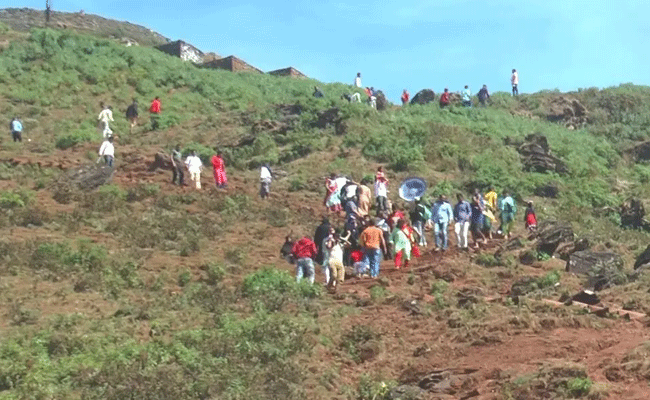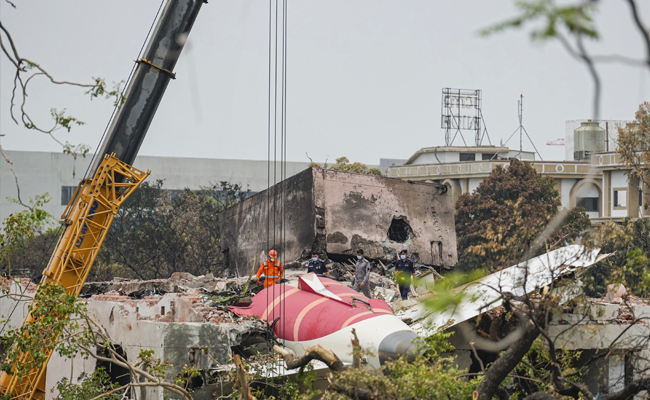Chikkamagaluru, a popular tourist destination in Karnataka renowned for its scenic beauty, has witnessed a significant surge in tourist arrivals following the implementation of the state government's Shakti Yojana. The scheme has contributed to a doubling of tourist numbers in the district, highlighting its positive impact on local tourism.
Fondly referred to as the 'Coffee Land of Karnataka' and the 'Kashmir of Karnataka', Chikkamagaluru attracted 69.70 lakh tourists in 2022. As of June-end 2023, the district has already welcomed 29.24 lakh visitors. Within just one month of the Shakti scheme's introduction, Chikkamagaluru witnessed an impressive influx of 7.17 lakh tourists.
Tourist sites such as Mullayyanagiri, Seethalayyanagiri, Bababudangiri, Kemmannugundi, and the waterfalls in the Chandradrona Hill area have been popular among visitors. Additionally, religious centers like the Sharadamba Temple in Sringeri, the Annapoorneshwari Temple in Horanadu, and the Kalaseshwara Temple in Kalasa have attracted a significant number of tourists to the district.
Comparing statistics from June 2022, Sringeri recorded 1.20 lakh visitors, Horanadu received 88,000 visitors, Kalasa welcomed 8,100 visitors, Dattapeetha saw 63,000 visitors, and Kemmannugundi hosted 18,000 visitors, totaling 2.97 lakh tourists for the month. This year has also witnessed a steady flow of visitors, with 8.13 lakh tourists in January, 3.03 lakh in February, 2.93 lakh in March, 3.67 lakh in April, 4.3 lakh in May, and 7.17 lakh in June.
Government records indicate that the free bus travel facility provided to women under the Shakti scheme has encouraged a significant number of female tourists to explore various religious and tourist centers in Chikkamagaluru. Furthermore, with the monsoon season subsiding, tourists have found it an opportune time to visit the district. Notably, the Sharadamba Temple alone witnessed a staggering 1.60 lakh visitors in June, while the Annapoorneshwari Temple and Kalaseshwara Temple welcomed 2.20 lakh and 1.5 lakh visitors, respectively. Dattapeetha and Kemmannugundi received 1.16 lakh and 71,000 visitors, respectively, during the same period.
Lohith, Assistant Director of the Tourism Department, expressed his satisfaction with the significant increase in tourist footfall over the past six months, with approximately 30 lakh visitors exploring the district. The season of the Neelakuruvanji flowers has also attracted a considerable number of tourists to Mullayyanagiri. The Shakti Yojana has played a crucial role in driving tourist numbers to the religious centers and popular tourist spots in Chikkamagaluru. As a result, business activities in the district have witnessed a notable upswing, further bolstering tourism prospects.
Let the Truth be known. If you read VB and like VB, please be a VB Supporter and Help us deliver the Truth to one and all.
Bengaluru (PTI): A Karnataka ex-MLA, Anjali Nimbalkar, a doctor by profession, has saved the life of an American woman passenger, who suffered a medical emergency mid-air during a Goa–New Delhi flight, official sources said on Sunday.
The incident happened when Nimbalkar, AICC secretary co-incharge of Goa, Daman & Diu, Dadra Nagar Haveli, was travelling to Delhi to attend the "Vote Chori" rally organised by Congress at Ramleela Maidan on Sunday, they added.
Nimbalkar performed cardiopulmonary resuscitation (CPR) and revived the co-passenger, who complained of uneasiness and shivering, fainted and lost her pulse, they said.
Nimbalkar reportedly remained by the patient’s side for the entire duration of the flight, constantly paying attention to her medical needs and comforting her.
Soon after landing at Delhi, the unwell foreign passenger was shifted to a hospital by an ambulance, sources said, adding that Nimbalkar's timely action received praise from passengers and crew members.
Lauding Nimbalkar, Chief Minister Siddaramaiah, in a post on 'X' said, "Deeply moved and incredibly proud to hear about the remarkable presence of mind and compassion shown by former Khanapur MLA Dr Anjali Nimbalkar during a Goa–New Delhi flight. When an American woman suffered a medical emergency mid-air, Dr Anjali instantly rose to the occasion and administered timely CPR, saving a precious life."
ALSO READ: After fake ID crackdown, IRCTC daily new accounts down to 5000 from one lakh: Railways
What makes this even more inspiring is that, despite having stepped away from her medical profession and being actively engaged in politics, the doctor within her responded without a second thought, he said, adding that "this selfless act reflects not just professional expertise, but a profound sense of humanity, service, and responsibility toward fellow beings."
"Whether in power or not, leaders like Dr Anjali Nimbalkar stand as shining examples of true public service—always ready to help, without expecting anything in return. Such individuals set a powerful standard for society and remind us of the true meaning of leadership," he further added.
Thanking the CM, Nimbalkar said, she has done her duty as a Doctor.
"It (is) also my job and duty as a doctor to serve in this capacity whenever required. Means a lot coming from you, who himself is an example of social commitment," she said in a post on 'X', replying to the CM.




